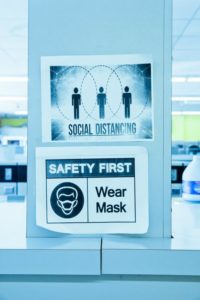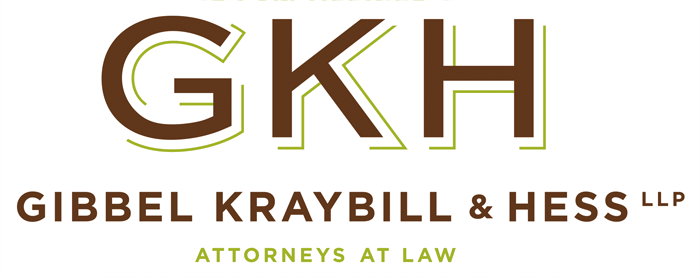Further Modifications to Green Phase Occupancy Limits: Business Update 7
 In our last Business Update, we addressed the various differences between the Green, Yellow, and Red phases of Governor Wolf’s business shutdown orders, and what businesses should focus on when moving between phases. Since that update, we have seen the Governor issue a universal masking order expanding the masking requirements throughout the state and a targeted mitigation order mostly aimed at the restaurant, bar, entertainment, and recreation industries. On October 6, 2020, Governor Wolf modified his targeted mitigation order by replacing the original green phase rules on social gatherings, adding to the rollback of green phase expansions in certain industries. This update addresses the most recent modifications to the targeted mitigation order.
In our last Business Update, we addressed the various differences between the Green, Yellow, and Red phases of Governor Wolf’s business shutdown orders, and what businesses should focus on when moving between phases. Since that update, we have seen the Governor issue a universal masking order expanding the masking requirements throughout the state and a targeted mitigation order mostly aimed at the restaurant, bar, entertainment, and recreation industries. On October 6, 2020, Governor Wolf modified his targeted mitigation order by replacing the original green phase rules on social gatherings, adding to the rollback of green phase expansions in certain industries. This update addresses the most recent modifications to the targeted mitigation order.
What Does the Updated Order Apply to?
- Events and Gatherings Are: temporary groupings of individuals for defined purposes, that takes place over a limited timeframe, such as hours or days. For example, events and gatherings include fairs, festivals, concerts, or shows and groupings that occur within larger, more permanent businesses, such as shows or performances within amusement parks, individual showings of movies on a single screen/auditorium within a multiplex, business meetings or conferences, or each party or reception within a multi-room venue.
- Events and Gatherings Are Not: places or functions where people share a space in the ordinary course of business, the ordinary patronage of bars, restaurants, and retail establishments, classrooms, and indoor recreation/health and wellness facilities.
- These settings which are not events or gatherings are still subject to 25%, 50%, or 75% occupancy limitations whichever is applicable.
- Telework is required where possible.
What New or Additional Requirements Apply to Events and Gatherings?
- Originally: outdoor events were limited to 250 people and indoor events were limited to 25 people.
- Now: the requirements refer to a Maximum Occupancy Calculator, which uses a range of occupancy levels and establishes a corresponding percentage of allowable occupancy. Occupancy or capacity levels can be found on building code or fire safety certificates.
Indoors:
Maximum Occupancy – Allowable Indoor Rate
0-2,000 people 20% of Maximum Occupancy
2,001-10,000 people 15% of Maximum Occupancy
Over 10,000 people 10% of Maximum Occupancy up to 3,750 people
Outdoors:
Maximum Occupancy – Allowable Outdoor Rate
0-2,000 people 25% of Maximum Occupancy
2,001-10,000 people 20% of Maximum Occupancy
Over 10,000 people 15% of Maximum Occupancy up to 7,500 people
- Additional Requirements:
- Venues must hold events in a manner that facilitates the three most basic mitigation measures social distancing, frequent handwashing, and mask wearing. These extra measures can include additional bathrooms and handwashing stations, alternate arrival/departure times and locations to avoid congregating, or additional staff to help enforce venue rules.
- These provisions do not apply to religious institutions.
- Answers to frequently asked questions regarding the targeted mitigation order and the recent amendments outlined above can be found here.
What Can Businesses Expect Moving Forward?
We are seven months and as many updates into Pennsylvania’s state-wide coronavirus mitigation efforts. Few themes or trends have arisen during this time, but one thing is certain—the coming months will bring more changes to the current orders and further strategies to try to combat the persistent coronavirus. Another developing trend to watch is the competing pressures on Governor Wolf’s mitigation policy. The Governor’s orders continue to face challenges in the legislature and some courts. These challenges have likely resulted in the changed occupancy limits above and the recently announced expanded time for restaurant alcohol sales which will be permitted until 11:00 p.m. However, this seeming loosening of restrictions comes at a time when the Commonwealth is reporting its highest COVID-19 infection numbers since the outbreak started. While the hope is that trends towards relaxed restrictions are accompanied by signs of the virus abating, businesses should plan for the likely reality that the more the numbers look like March and April, so too will the governor’s orders and their accompanied restrictions.
This update was prepared by attorneys Jeff Worley and Ian Brinkman. This update does not constitute legal advice and has been prepared for informational purposes only. Please contact us directly with questions about your specific situation.
